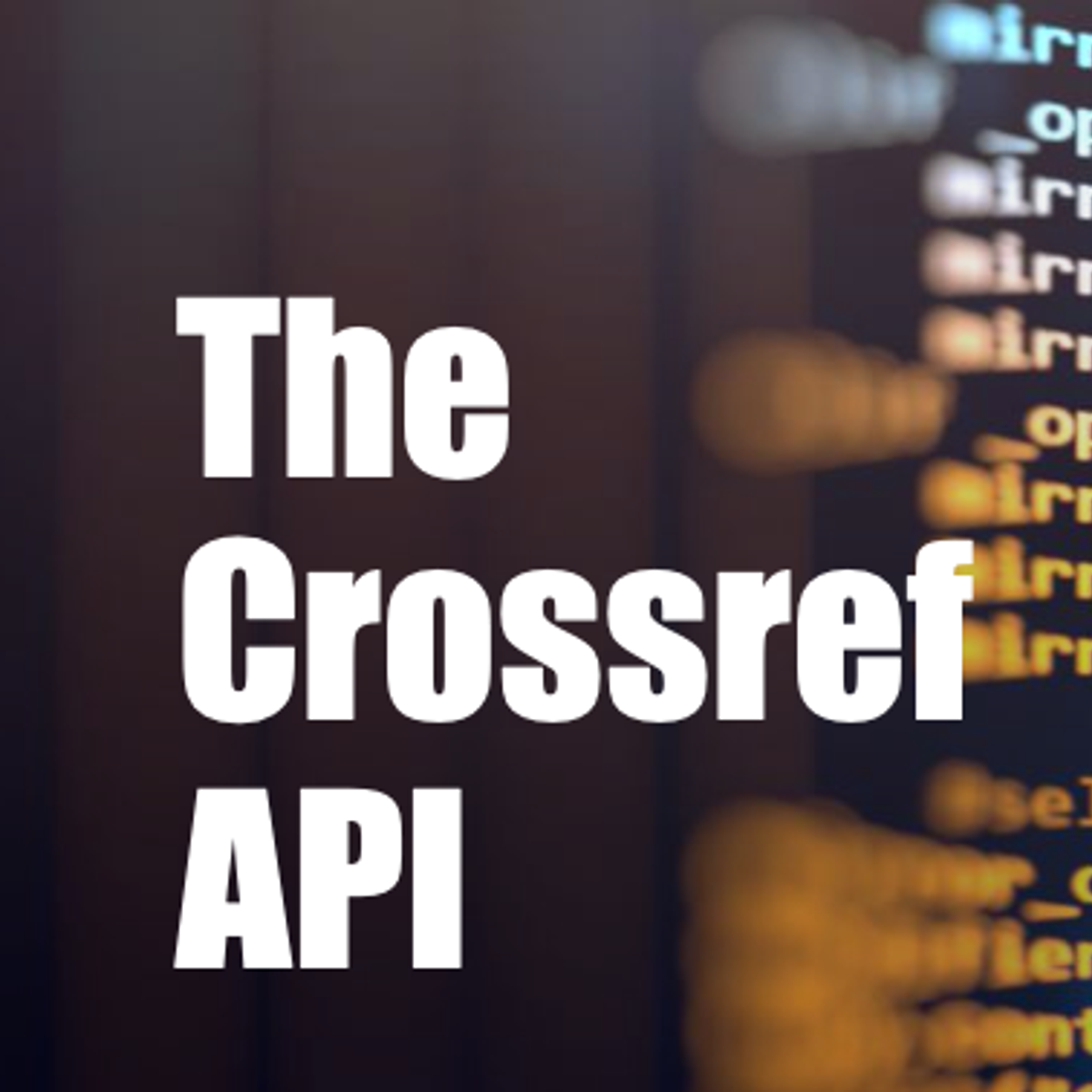
Manually searching specific metadata for an academic paper is laborious. Is there any magic that we can get all metadata for the bibliography search done at once? Crossref is the tool for you. It can extract the metadata for tens of thousands of papers online in one run.
Read more
Manually searching specific metadata for an academic paper is laborious. Is there any magic that we can get all metadata for the bibliography search done at once? Crossref is the tool for you. It can extract the metadata for tens of thousands of papers online in one run.
Manually searching specific metadata for an academic paper is laborious. Is there any magic that we can get all metadata for the bibliography search done at once? Crossref is the tool for you. It can extract the metadata for tens of thousands of papers online in one run.
By the end of this project, learners will be able to create their own tailored R function to find paper metrics from the Crossref API. The function, which will be guided to build step by step, can easily be re-used when there are newly added articles or if the learners want to get the most up-to-date metrics. In this guided project, the instructor will walk learners through understanding the Crossref API, tailoring an R function, and wrangling the bibliography dataset. A good handle of this method will make it convenient for learners to analyze different metrics for bibliography from different fields, such as impact and number of collaborators.
What's inside
Syllabus
Good to know
Save this course
Reviews summary
Introductory course on crossref api
Activities
Organize bibliography data
Show steps
Gather and arrange relevant materials to facilitate effective learning and quick referencing
Show steps
-
Collect papers and references
-
Create a systematic filing system
Review Crossref API
Show steps
Know your way around Crossref to succeed in this course
Show steps
-
Read Crossref documentation
-
Experiment with Crossref API
Explore Crossref R package
Show steps
Become familiar with R package for Crossref to enhance data analysis skills
Show steps
-
Install and load Crossref R package
-
Follow tutorials on using the package
Five other activities
Expand to see all activities and additional details
Show all eight activities
Analyze paper metrics
Show steps
Identify and categorize important paper metrics to improve reading efficiency
Show steps
-
Extract metrics from various paper sources
-
Organize and categorize metrics
Build tailored R function
Show steps
Create a customized R function to automate paper metric extraction, saving time and effort
Show steps
-
Design the function's structure and parameters
-
Write and test the R code
Collaborate on bibliography analysis
Show steps
Exchange ideas, share insights, and learn from peers to enhance understanding and broaden perspectives
Show steps
-
Form a study group
-
Discuss paper metrics and analysis techniques
Write a blog post
Show steps
Summarize key concepts and share insights on Crossref and bibliography analysis to reinforce learning and potentially help others
Show steps
-
Choose a topic and outline the post
-
Write and edit the blog post
Contribute to Crossref R package
Show steps
Enhance your understanding and make a valuable contribution to the open-source community by improving the Crossref R package
Show steps
-
Identify an area for improvement or a new feature to add
-
Write and test code changes
-
Submit a pull request
Organize bibliography data
Show steps
Gather and arrange relevant materials to facilitate effective learning and quick referencing
Show steps
- Collect papers and references
- Create a systematic filing system
Review Crossref API
Show steps
Know your way around Crossref to succeed in this course
Show steps
- Read Crossref documentation
- Experiment with Crossref API
Explore Crossref R package
Show steps
Become familiar with R package for Crossref to enhance data analysis skills
Show steps
- Install and load Crossref R package
- Follow tutorials on using the package
Analyze paper metrics
Show steps
Identify and categorize important paper metrics to improve reading efficiency
Show steps
- Extract metrics from various paper sources
- Organize and categorize metrics
Build tailored R function
Show steps
Create a customized R function to automate paper metric extraction, saving time and effort
Show steps
- Design the function's structure and parameters
- Write and test the R code
Collaborate on bibliography analysis
Show steps
Exchange ideas, share insights, and learn from peers to enhance understanding and broaden perspectives
Show steps
- Form a study group
- Discuss paper metrics and analysis techniques
Write a blog post
Show steps
Summarize key concepts and share insights on Crossref and bibliography analysis to reinforce learning and potentially help others
Show steps
- Choose a topic and outline the post
- Write and edit the blog post
Contribute to Crossref R package
Show steps
Enhance your understanding and make a valuable contribution to the open-source community by improving the Crossref R package
Show steps
- Identify an area for improvement or a new feature to add
- Write and test code changes
- Submit a pull request
Career center
Research Analyst
Data Scientist
Science Communicator
Scholarly Communications Manager
Science Writer
Science Policy Analyst
Science Librarian
Information Architect
Knowledge Manager
Librarian
Reading list
Share
Similar courses
OpenCourser helps millions of learners each year. People visit us to learn workspace skills, ace their exams, and nurture their curiosity.
Our extensive catalog contains over 50,000 courses and twice as many books. Browse by search, by topic, or even by career interests. We'll match you to the right resources quickly.
Find this site helpful? Tell a friend about us.
We're supported by our community of learners. When you purchase or subscribe to courses and programs or purchase books, we may earn a commission from our partners.
Your purchases help us maintain our catalog and keep our servers humming without ads.
Thank you for supporting OpenCourser.



